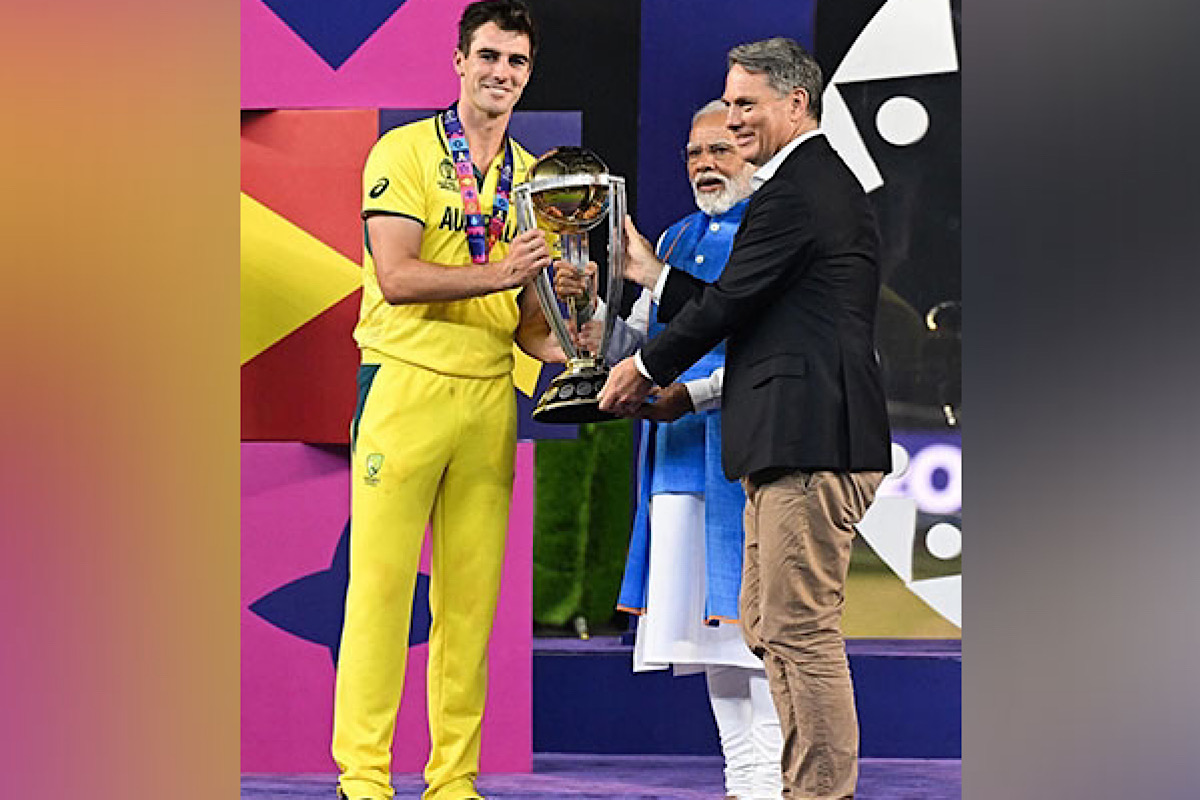The 2023 World Cup is done and dusted with Australia being crowned champions for a record sixth time! The result will take some time to sink in for the billions of Indian cricket fans, as the decade-long wait for an ICC silverware, more precisely a 50-over World Cup trophy, was once again left unfulfilled after Sunday’s six-wicket loss in the summit clash at the Narendra Modi Stadium here.
But spare a moment for those 11 men on the field, and a dozen more on the dugout, who put in their heart and sweat, mesmerizing a billion with 10 wins on the bounce after crisscrossing the country, traversing over 9000 kms in the course of 45 days before falling agonizingly short on D-day.
Advertisement
Going by the ICC’s campaign for the 2023 World Cup: ‘It Takes One Day’, it actually took just a day to leave a stadium filled with more than 100,000 fans in eerie silence once Glenn Maxwell hit those winning runs to shatter India’s dreams of ending a global title drought stretching back to the 2013 Champions Trophy.
The heart-wrenching loss left a number of questions unanswered… What if?
Looking back, once the Indian team management sits to analyse the shortcomings, one thing will surely come up, if India fell short of a possible Plan B when it mattered the most? The Statesman understands that the team had done all things in control to go all the way in the tournament, but on the hindsight missed a trick when it came down to the big final.
Toss
Well, it wasn’t in either captain’s hands, but the decision played a part in the eventual outcome. Pat Cummins gambled by putting India to bat, which anyway Rohit Sharma would have chosen. But what transpired after the first powerplay wasn’t something the hosts had expected. Yes, they were three down, but still had the firepower and the run-rate to pile on a sizeable total in excess of 300 but failed to execute their plans, especially when Cummins employed his part-time options in Maxwell and Head to fill in for the fifth bowling option.
Batting fragility in big games
Over the past 10 games, including the semifinal against New Zealand, India’s top-order clicked, and followed the same template of the skipper Rohit Sharma getting those brisk starts for the likes of Virat Kohli and the rest to cash on to the platform. On Sunday, India were on course after racing to 80 by the end of the powerplay, but could manage only 160 in the next 40 overs. Against the same opposition, the Indians were in a far more precarious situation in the opening game in Chennai after being three wickets down with mere two runs on the board, but showed the character to bounce back which unfortunately wasn’t the case in the final.
Boundary drought
A promising start followed 15 overs without a boundary, before KL Rahul found the escape route for once through Glenn Maxwell but the lull continued even after that. The sharp decline in boundary scoring significantly hampered the run rate, and even when Rahul tried to accelerate he was dismissed. Suryakumar Yadav was included in the side for his power-hitting abilities, and was rightfully demoted to No.7 on Sunday but the Australians did their homework, and despite banging in short, they did not give him the pace to play his shots. Full marks to Pat Cummins & Co!
Ground fielding
David Warner at 37 was a livewire on the field. Against the South Africans during the semifinal at the Eden Gardens, Warner was the most dreaded fielder and he continued in similar fashion in the final. A textbook cover drive from Rahul would have fetched him a boundary on 9 out of 10 occasions but Warner ensured that he manned the fence to perfection. Travis Head’s catch to dismiss Rohit was another display of Australia’s sharp fielding. On the other hand, India’s slip cordon, manned by Virat Kohli and Shubman Gill allowed David Warner to pierce through them in the very first over of the chase, and later on Head milked boundaries at will, to outscore India’s total boundary count of 16 (13 fours & 3 sixes) to his total of 19 (15 fours & 4 sixes).
Over dependence on spin twins
Kuldeep Yadav and Ravindra Jadeja have been the go-to bowlers for Rohit during the middle overs. But what if one had an off day? Cummins bravely used his part-time bowlers in both knockout games (semifinal and final), but India preferred to use their part-time options only against the Netherlands. When the frontline bowlers failed, Rohit Sharma had a number of options to break the flourishing partnership between Head and Marnus Labuschange, but didn’t want to take undue risks. It says fortune favours the brave and Cummins scored on that count as Maxwell managed to pack back Rohit to weather the storm early on.
Mindset
This Indian team was expected to get over the mindset that almost resulted in a meek surrender two decades back in Johannesburg. At the Motera, they showed intent, had the backing of the more than 1,300,000 home fans, beat the Australians in their recent meetings, but on the big day, it seemed as if the Indian players were overawed by the sense of the occasion. The Aussies, however, did not let the situation play into their systems, and despite being three down for 47, showed the intent and right mindset to dominate the Indian bowling for a sixth World Cup title.











